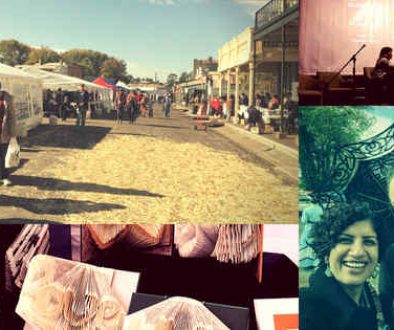First Steps towards the Healing Journey
So you have decided “enough is enough”. You have decided to explore, look deeper into your trauma and re-integrate it within your mind, body and soul.
Now what?
In this blog, I will share how to prepare yourself for the healing journey so that it’s as painless as possible. You will also learn that it’s not too bad (even though it may feel that way sometimes). I also want to assure you that you will come out rising and shining if you stay connected to yourself.
First things first though. So I want to say “Thank you”,
Thank you for taking a stand for yourself. Thank you for choosing “You”. Thank you for your courage and bravery.
Thank you for starting the process to connect more deeply within yourself and with people in your lives. And thank you for coming here and trusting me with your journey.
If you haven’t already, please read this article “About” on this website. This will familiarise you with the overall process of healing and how you can use this website to the fullest of its capability.
If you know me personally, then you know that I have been married before. It was not a pleasant experience but leaving that marriage was extremely hard. I had tried to leave him a few times but every time I did, I panicked. I became nauseous, threw up and eventually called him to get back together, only to realise that I wasn’t happy with him either.
This cycle of perpetual pain would have continued, if it weren’t for my mentor (whom I will forever be grateful). His advice was very simple: “If you know that you will be afraid, create a plan beforehand that you can implement before you are totally paralysed by fear.”
This made so much sense.
This is exactly what we will do in our preparation so that you are not gripped by extreme emotions and you are able to take care of yourself during this process of healing.
Here are the steps to this preparation:
- Setting an intention: This step enables you to prepare your environment to best support you in your healing journey.
- Connecting feelings with sensations: This is where you learn to dis-engage from the stories that your brain creates. And when you do, you stay present with the feelings and they don’t get worse. In fact, you go through them with relative ease and openness.
- Creating a Resources List: This is a go-to list when you want to feel better and want to re-energise yourself.
Diving Deep into the Preparation
Step 1: Setting an intention
When you get into your car to drive anywhere, you always need an overall idea of where you are going (an intention). Without the intention, you may end up driving chaotically on the roads and never arrive anywhere.
Set an intention to heal.
Allow yourself permission to go “there”.
Celebrate your bravery and courage. What you are about to do is courageous. Know that and feel it.
Trust in the process. Know that you will be OK.
Once you have set an intention, the next thing is to keep it in the back of your mind. When you start your journey, sometimes you may forget why you are doing this. Sometimes, you may want to just stop and sometimes you won’t know where to go.
I am a big believer of visual cues.
There is so much that goes on in our brains that it is very easy to forget the things that we need to remember, specially when we are feeling emotionally vulnerable.
Writing messages and sticking them on the wall can help you remember what you need to. These can inspire you to continue your journey, or take an action to help you feel better, or simply to trust that everything is going to be ok. You can write anything that helps you with your journey. The key is to have them on the wall so you get to see them often.
Step 2: Connecting feelings with sensations
I would like to dedicate this section to Martina Hughes of Tantric Blossoming. She has taught me how to stay present with my feelings and my body and that has been such a crucial step in my own healing journey.
To explain this step, I will take a very simple example to illustrate my point and then we will apply it to our situation.
Imagine that you are feeling cold. It’s windy, you are outside and even though you are wearing warm layers, you still feel the chill inside your bones. Do you remember the stream of thoughts that occur? they go something like…
- Oh man! its freaking cold
- I hate this weather
- Why am I feeling so cold?
- Only if I could get home
- I want to be in my bed
- I don’t want to be outside
- I should move to a warmer place
- Why is winter so cold?
- Can the wind just go away?
- and on and on….
Your brain just wouldn’t stop. It will keep thinking and re-thinking in ways that it could make you feel better and safe. This is its job.
If you stop listening to these thoughts for a minute and focus on the sensations in your body – you may notice these:
- Cold fingers and toes
- Numbness
- Contracted muscles
- Feeling cold or maybe hungry
The feelings don’t have a story attached to them.
When you listen to your brain’s incessant stories, they may make you feel worse as you get frustrated that you can’t get out of feeling cold. When you focus on the sensations, you just focus on the sensations.
When extreme emotions occur, the key is to stay with the sensation.
If you can do that, you will make it easier on yourself because you will not be taken by the stories of your brain. But of course, if extreme emotion occur, it may be very hard to stay with the sensation so we need to practice. If we can teach ourselves to stay with the feelings and sensations, it is more likely that we stay there in the extreme situations as well.
So here is the practice:
- Sit in a comfortable spot and in a way where your arms can reach any part of your body.
- Silence is good but if you wanted to, you can play some nice relaxing music; you can be outdoors or indoors; just somewhere where you feel comfortable and cosy.
- Take a few deep breaths.
- Start placing your hands on various parts of your body and feel the sensation. You can start from the top and go down or you can start from the soles of your feet and move up.
- Name that sensation. Is it cold, warm, numb, tight, open, nauseous, contracted, relaxed, nothing? Whatever it may be, just feel it and name it.
- Place your hands on as many places as you can: soles of the feet; top of the feet; calves; shins; knees, thighs; buttocks; pelvic area; genitals; stomach; lower back; upper back; neck; chest; breasts (if you have them); arms; elbows; hands; fingers; face; cheeks; forehead; back of the head; front of the head; crown of the head.
- It may take you about 15-20 minutes depending upon how you go.
Initially, you may not feel anything. Don’t worry, its perfectly normal to not feel anything. If you are not used to connecting with your body sensations, it will take you some time to get going. But once you do, your progress will accelerate 🙂
Do this as much as you desire. Every day is really good coz it will really help your brain re-train itself and when extreme feelings come up for you, it will be very natural for you to stay with the feelings.
Step 3: Creating a Resources List
When you are feeling anxious, sad or upset, what makes you feel better?
What do you enjoy the most? What is an activity that takes your mind off almost anything?
What do you do to feel calmer? to feel safer?
Why is this important? Dr. Babette Rothschild, Psychotherapist and specialist in somatic trauma therapy, talks about this in great detail.The healing journey can be long and can be difficult at times; and sometimes, we just want a break from all this stuff.
During those times, the resources list can really come in handy. Because it can help you take a break. It can help you feel calmer. It can help you restore your faith in yourself and in others.
So what does a resources list look like? It consists of the following categories:
- Activities that you can do by yourself
- Lighting a candle and watching the flame
- Go for a walk in the bush (or forest)
- Have a cry
- Dance
- Meditate
- Listen to music
- Spend time with your pets
- Activities that you can do with friends
- Verbally share your pain and hurt with them
- Get hugs
- Ask for support in whatever way feels comfortable to you
- Do a fun activity together
- Activities that you can do with a romantic loved one
- Go on a date
- You can ask your loved one to hold you
- Create intimate time together
- Spend quality time together
It could be any or all of these things. The idea is to create a list and keep things handy, just in case you need them. It’s perfectly OK to want a break; to want some assurance; to want the love and support. Do remember to warn your friends and loved ones that you are about to do this so that they can be more sensitive to your needs.
As a last resort, you also have access to your local medical centres. Know where they are and keep their contact numbers handy.
If you take these steps, you will really prepare yourself for anything and everything that may happen during your healing journey. This will also give some assurance to your brain; and it will allow you to go a little bit further because your brain knows that you have your bases covered.
In my future blogs, I will share more about the specific things you can do that will help you heal but for now, preparation is the key
Good luck.
Peace and Blessings to you.
** Image courtesy: https://www.pexels.com/




December 6, 2016 @ 3:30 pm
I’m full admiration for the work that you are doing Ruby.
Thank you for allowing yourself to so be open & vulnerable so that you can serve others.
December 7, 2016 @ 6:25 am
Thank you Steve.